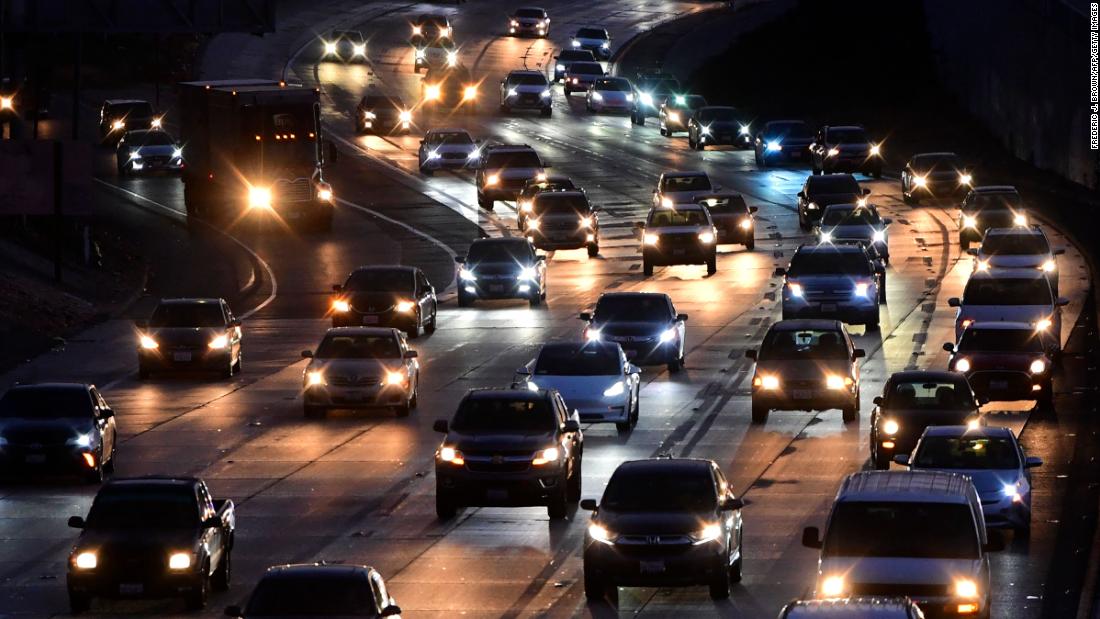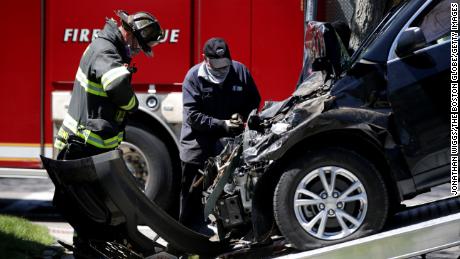It’s not just your imagination. Drivers in the pandemic have gotten more reckless
More motorists went too fast, failed to buckle up and drove under the influence of drugs and alcohol, according to law enforcement and traffic safety experts.
Experts have several theories for the rise in deadly crashes.
And based on preliminary data from the first three months of this year, 2021 has the potential to be even worse.
Motorists have been emboldened by emptier roads
The recent rise in deadly crashes has been seen in all regions of the country.
In New York state, more than 1,000 people died in motor vehicle crashes last year compared to 938 the year before, said Beau Duffy, a spokesperson for the state police. The percentage of crashes involving unsafe speed, alcohol or illegal drugs all rose in 2020 over 2019 levels, Duffy said.
Crashes in Colorado mirrored similar trends. Incidents of excessive speeding — going 40 mph or more over the limit — shot up by 48% last year over 2019, said Sgt. Blake White, a spokesperson for the Colorado State Patrol. The state also saw an increase in road rage, street racing incidents and other aggressive behaviors.
“During the height of the pandemic, many drivers stayed home and were discouraged from travel unless absolutely necessary,” White said. “Some of the drivers on the road seemed to feel traffic laws no longer applied during the pandemic because of the decrease in commuter traffic volume.”
As drivers have trickled back onto the highways, they’ve had to adjust to sharing space with others after a year of open roads. One result has been increased road rage, White said.
Despite fewer cars on the roads, pedestrian deaths also rose last year.
“Even though there were fewer vehicles on the road last year, more people on foot were struck and killed by drivers,” said Adam Snider, the GHSA’s communications director.
When factoring in the decrease in vehicle miles traveled in 2020, the pedestrian fatality rate leaped 21% from 2019 — the largest annual increase since the NHTSA began collecting and analyzing such data in 1975.
Speeding drivers caused deadlier wrecks
During the pandemic many officers shifted their efforts to help critical industries such as grocery stores during supply shortages, Colorado’s White said. That meant a dip in traffic safety enforcement, he said.
As a result, many motorists put the pedal to the metal — which led to more deaths.
“Increased speeds lead to more fatal and injury crashes,” White said. “When speed increases, the severity of the crash is exponentially worse.”
Many other large states, including California and Georgia, also reported increases in fatal crashes last year. In Georgia, while there were fewer crashes statewide, the number of fatalities rose last year due to speeding, said Lt. W. Mark Riley of the Georgia State Patrol.
“With the roadways being more open and more people increasing their speeds, the wrecks were more violent,” he said. “It’s always more riskier when people are driving faster.”
Last year California Highway Patrol officers issued 28,000 citations for speeding over 100 miles per hour — a 92% increase over 2019. The state also saw an uptick in fatal crashes last year, following decreasing numbers the previous two years, said Jaime Coffee, a spokesperson for the California Highway Patrol.
Coffee said the CHP is working with other highway patrols and state police agencies on traffic safety campaigns that focus on enforcing safe speeds.
More fatal crashes have been tied to drugs and alcohol
Beyond speeding and careless driving, more people turned to alcohol to cope with the prolonged stress and uncertainty of the pandemic.
“We all had so much on our minds throughout 2020, making it even more difficult than usual for some drivers to focus on the road amid everything happening in the world around them,” said Snider of the Governors Highway Safety Association.
“In addition, the pandemic likely exacerbated substance abuse issues for some individuals,” he said.
“Getting drivers to slow down and obey the speed limit, buckle up every trip and always drive sober will be key to reversing these negative trends,” Snider said.
But the early signs for 2021 are not encouraging.
![]()










